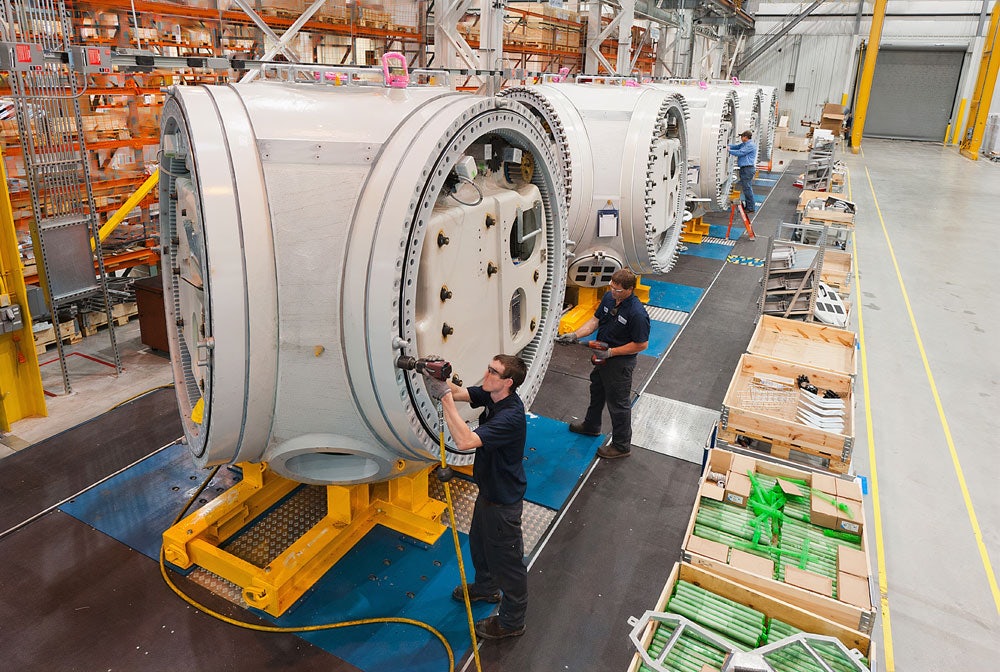What is Intelligent Industry and Industry 4.0?

Driven by an information revolution, the world’s changing at an unprecedented pace. In our latest blog posts, we're sharing what some of the key terms that define this age grounded in data mean, such as intelligent industry, IoT and digitisation. Today we find out, what does ‘intelligent industry’ mean?
Over the past couple of decades, new waves of technology have emerged, including:
- Cyber security
- 5G
- Edge computing
- Big data analytics
- The Internet of Things (IoT)
- Artificial Intelligence (AI) and Machine Learning (ML)
These technologies have helped industry evolve and become intelligent with the ability to capture, analyse, and turn copious amounts of data into valuable insights that fuel greater efficiency and innovation. To understand how industry got here today however, it’s important to understand its evolution since the Industrial Revolution began in the 17th century.
The four phases of the Industrial Revolution
Before the late 18th-century, industry centred around hand production methods. Steam and waterpower led to what is now known as the First Industrial Revolution during the late 18th to early 19th-century. Industry became mechanised. Innovation fuelled the industrial revolution. For example, in the textile industry, the new mechanised steam or water-powered spindles sent the efficiency of cotton spinning through the roof.
The Second Industrial Revolution took place a century later, from the late 19th to early 20th century. Known as the Technological Revolution, mass production became part of the manufacturing process because of the electrification of industry. Innovations such as the telegraph and railroad allowed for unprecedented movement of people and intelligence, further fuelling the revolution.
The Third Industrial Revolution occurred more recently, in the late 20th-century. Known as the Digital Revolution, the computer and the internet caused massive change. Industry became automated and people were more connected than ever before.
The fourth Industrial Revolution and Industry 4.0
Just like the innovation of steam-power led the First Industrial Revolution, innovation sparked the Fourth Industrial Revolution, or Industry 4.0.
The new technologies that drive Industrial 4.0 include: IoT, cloud computing, ML, AI, and sensors, to help industry ingest, analyse, and exchange unprecedented amounts of data. Armed with this data, operators can now make more informed decisions, increasing efficiency, safety, and productivity.
From the four phases of the industrial revolution, we can identify two key themes: the impact of technological innovations and the importance of connectivity.
Industry 4.0 technologies - the Internet of Things
The Industrial Internet of Things (IIoT) is an Industry 4.0 technology at the core of Intelligent Industry. The IoT refers to a network of technologies, sensors, and software that all connect and exchange data.
Imagine those apps that allow you to monitor the temperature of your home or check if you left any lights on while you are at work: they are examples of IoT. It is an interconnected web that constantly exchanges data and connects different technologies or systems via the internet. When applied to industry, you get the Industrial Internet of Things (IIoT).
Historically, industries kept their data in multiple databases and analysed it in reports. As technology developed, the amount of data available increased and there was too much to analyse. IIoT uses various technologies to enable operators to harness all the available data:
- Big data analytics – the ability to collect and analyse vast swathes of data
- Cloud computing – converging all data into one accessible place
- Edge computing – managing data nearer to where it is needed
- AI and ML – intelligent machinery and technology can create models or simulations, allowing for predictions and foresight and decreasing risk
IIoT and Industry 4.0 means that massive quantities of data can now be analysed and transformed into insight or even foresight. The impact of this is huge, industry is now more efficient, more productive, safer, and of better quality. In short, industry has become Intelligent Industry.
Intelligent industry in practice
The benefits of intelligent industries are widespread, so many sectors have taken advantage.
In the agricultural industry, some farmers have harnessed Intelligent Industry to tell them when to fertilise or irrigate. Sensors ingest, analyse, and communicate data about factors like soil composition or expected weather.
The automotive industry now produces cars with predictive maintenance features or even self-driving capabilities by harnessing the power of AI.
The energy sectors can also benefit from becoming intelligent. For example, the Oil and Gas industry is facing many challenges that a transition into Intelligent Industry could alleviate. Currently, 95% of the world’s pipelines are unmonitored for most of the distance they cover. Consequently, when an issue arises like a leak or damage, it might be a while before it’s spotted, causing potential environmental damage as well as cost. Intelligent pipelines would mitigate these risks by providing real-time monitoring that, as a bonus, would also increase employee safety.
Klarian and Industry 4.0 | Intelligent pipelines
Klarian offers an innovative and IIoT-based solution (Digipipe) to overcome the challenges that industries face by making them intelligent. We help the pipeline industry step into Industry 4.0.
Our talented engineers and data scientists are looking to transform millions of kilometres of pipelines that carry the world’s supplies of water, gas and oil.
Digipipe collects, integrates and analyses data from an array of sources (including SCADA and sensors) to eliminate data siloes and provide actionable insights on complex scenarios. We can extend Digipipe with our edge computing technology for even greater connectivity.
Using the wealth of data that Digipipe collects and analyses, pipeline operators can make their businesses safer, greener and more efficient.